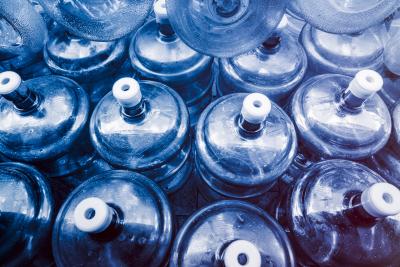Two Weeks Ready
Oregon has experienced a recent cycle of emergencies and disasters, including floods, drought, wildfires, ice storms, excessive heat, and the COVID-19 pandemic. Each of these serves as reminder of the importance of individual preparation.
When the next disaster strikes, first responders may not be able to reach everyone impacted within hours or even days. That’s why every Oregonian should proactively prepare to be self-sufficient for at least two weeks. This is especially the case in the event of a Cascadia Subduction Zone earthquake and tsunami.
Being “2 Weeks Ready” means having a preparedness plan and enough food, water, and supplies for you and your household to survive on your own for a full two weeks in the aftermath of a disaster.
Being 2 Weeks Ready makes communities more resilient in a number of ways:
- Allows first responders to triage effectively and attend to critical, life-threatening situations
- Ensures individuals and families can survive if roads are impassable, and no one can deliver supplies or assistance
- Encourages neighbors to care for one another, and to protect vulnerable populations
Disaster can strike any time, without notice. Taking simple steps today can pay huge dividends when the next emergency arrives.
The Oregon Office of Emergency Management’s 2 Weeks Ready program empowers Oregonians to take the most critical steps to preparedness.
1) Be Well-Informed
- a) Sign up for emergency alerts in your area at PublicAlerts.org.
- b) Make sure your cell phone has Wireless Emergency Alerts (ready.gov/alerts) enabled.
- c) Know evacuation routes in your area.
2) Make an Emergency Plan
- a) Learn how to develop a plan. Visit ready.gov/ plan.
- b) Discuss the plan with your household members, loved ones, friends and neighbors.
- c) Practice the elements of the plan so you’ll be ready when a disaster occurs.
3) Build an Emergency Kit
- a) Be equipped with at least two weeks’ worth of food, water and critical supplies. Learn to assemble an emergency supply kit at Ready.gov/kit or redcross.org.
- b) Prepare a pet evacuation kit (ready.gov/pets) in a tote bag or pet crate.
- Keep your emergency supplies in an easy-to-carry backpack, bucket or bag that you can use at home or take with you in an emergency.
Every family’s kit will look different. There is no one correct way to put together two weeks’ worth of supplies since everyone has individual needs.
As a starting guide, this is a list of basic items that should be included in every home’s emergency supply kit.
- Water, one gallon per person per day for at least two weeks, for drinking and sanitation
- Food, at least a two-week supply of non-perishable canned/freeze-dried food
- Battery-powered or hand-crank radio and a NOAA Weather Radio with tone alert and extra batteries for both
- Flashlight and extra batteries
- First aid kit
- Whistle to signal for help
- Dust mask, to help filter contaminated air
- Plastic sheeting, duct tape to shelter-in-place
- Moist wipes, garbage bags and plastic ties for personal sanitation
- Wrench or pliers to turn-off utilities
- Can opener
- Hand sanitizer and face masks
- Extra medicine, including prescriptions
- Critical personal items
- Portable cell phone/device chargers
Being prepared to be self-sufficient for two weeks is an important and achievable goal. It means not just having two weeks of food and water, but thinking about the many things you already do to make you better able to bounce back after a disaster.
You can get there over time; you don’t have to do it all today. Start small and work toward the two-week goal. Pick up a couple items every payday and check out garage sales and thrift stores for tools and gear.
4 ) Storing Emergency Water
Storing drinking water may be the single-most important thing people can do to prepare for an emergency. Our partners at the Regional Water Providers Consortium recommend storing 14 gallons of water for each household member; about half a gallon per day for drinking and a half-gallon for sanitation and food preparation (more may be needed to accommodate pets or individuals with special needs). If space is tight, store as much as possible.
The best place to store water is in a consistently cool, dark location that is easy to access. Water not commercially bottled should be replaced every six months.
Commercially bottled water
Purchasing commercially bottled water is the easiest way for many people to build a backup water supply for an emergency. Commercially bottled water should be stored in its original sealed container. Don’t open it until it is needed, and observe the “use by” date.
Sanitized containers
Water storage containers should be properly sanitized, have tight seals, be made of food-grade plastic or steel, and designed to hold water; they can be found at most outdoor/camping stores (or two-liter plastic soft drink bottles can be used). Don’t use breakable glass, plastic jugs or cardboard containers that have contained milk or fruit juice, as bacteria-causing milk protein and fruit sugars cannot be effectively removed from plastic or cardboard containers.
Sanitizing water containers
The Regional Water Providers Consortium offers these steps to sanitize water containers:
1. Wash the container and lid with dish soap and water
2. Rinse it completely with clean water
3. Mix one teaspoon of unscented liquid household chlorine bleach and one quart of water
4. Pour the bleach water solution into your container
5. Cover the container and shake it for 30 seconds, making sure bleach water covers all inside surfaces
6. Pour the bleach water out of the container
7. Air-dry the sanitized container before filling





